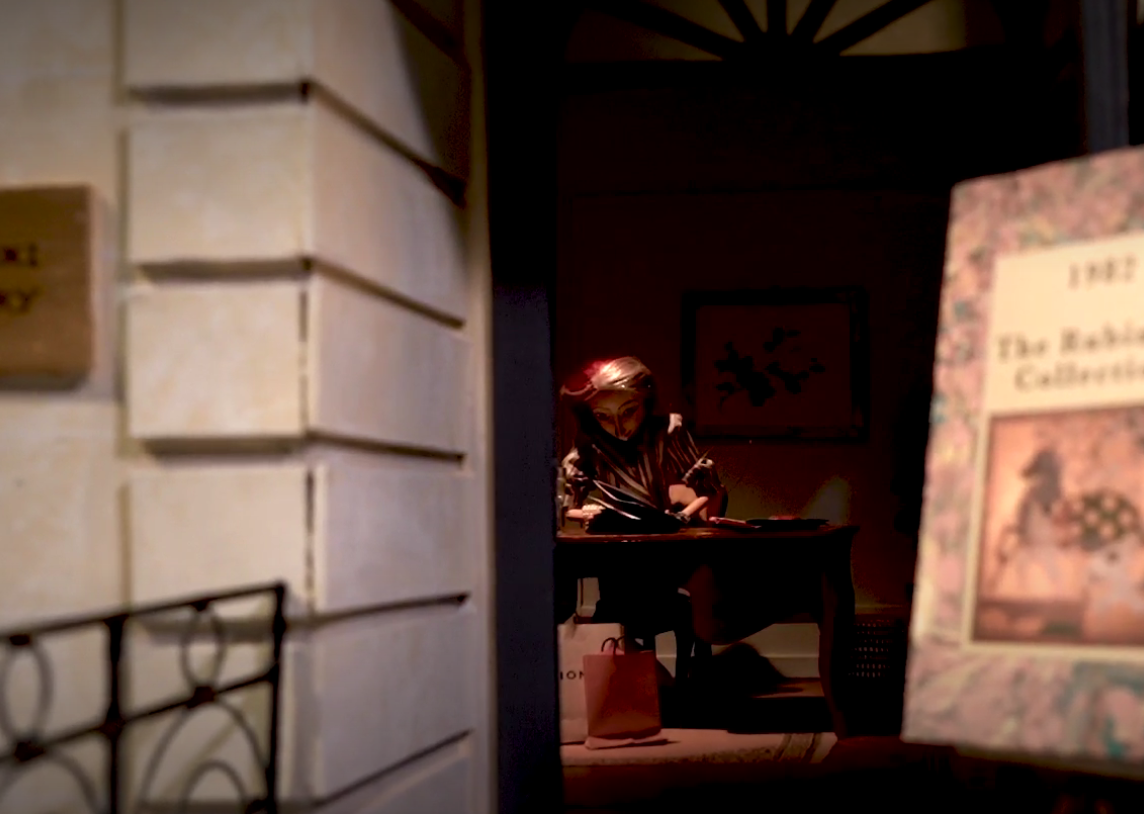- Scotland
- Content
News
The Fantastic Life of Minnie Rubinski
by Inesa Vėlavičiūtė
Produced by Edinburgh’s own Vision Mechanics and boasting an intriguing title, The Fantastic Life of Minnie Rubinski is an emotionally charged project, delving into the weighty and under-explored theme of living with dementia. Having had a preview run at the Fringe and premiered at this year’s Manipulate Festival, this innovative audio-visual installation was inspired by the Creative Director Kim Bergsagel’s mother’s experiences in the midst of her illness and adapted from phone calls and family anecdotes. Blending film, miniature set design and puppetry, the award-winning theatre company invites the audience to enter the enigmatic world of one woman, where reality intertwines with imagination and the viewers are left to discern where her rational mind ends and the fantasy begins.
Armed with screens and earphones, the synapses of an enormous brain installation exhibit images representing the character’s reel of memories. Mixing traditional puppetry with untraditional staging, the multimedia show uses a cast of beautifully carved marionettes, placed in perfectly detailed, compact miniature period stage sets of each cinematic narrative. Manipulating the elements of scale and proportion, the filmed scenes reflect Minnie’s life journey from childhood to the present day, revealing many facets of her personality: her identity crisis as a wife and a mother, self-rediscovery as an artist and a woman forging her own path as well as the newfound love with the art dealer Mr Okinawa. The brain here plays a role of a puppeteer: the mind controls the memories it remembers and how it remembers them just as a manipulator controls the strings of the marionettes and its movements. It also assumes the role of a therapist when in conversation with oneself and the audience, using the puppets to interpret the thoughts and feelings, unravelling them a step at a time, trying to untangle the memory strings. These memories being attached to the brain synapses can also be compared to the strings attached to the bodies of the marionettes. In addition to all the technical aspects of the puppet’s movement, the location of the puppeteer (although invisible) is also significant - standing above and looking down at the marionette he/she observes it thus there could be a psychological reason for choosing this particular type of the puppet to illustrate the relationship between Minnie’s brain and her life, and memories.
The performance brilliantly conveys Minnie’s reality to the audience without an explicit dialogue: the viewers can connect and disconnect easily to it by having to physically walk around to see each short film. The collage of these film snippets employ a sequence of disparate scenes displayed in a chaotic order rather than following a linear storyline. However, it is the labyrinth of a confused human mind and its fantasies rather than the chronology that is important here. Artfully juggling the disjointed memories within the subconscious layers of Minnie’s brain, the creators produce a number of juxtapositions that unravel the snapshots of her psyche, revealing the undertones of the distorted sense of personal identity. This is evident in the surrealist environments and intricate plots of her wild, action-movie adventures in caves and jungles as well as eccentric quests where the remnants of familiar imagery and people become twisted in her memory. For example, trying to save her ex-husband and children stranded in a tiny boat moving through a storm-tossed sea, with a large wave, the shape of a famous Japanese woodblock print art, fast approaching.
Assembling the fractured narrative in this particular way allows Minnie’s character to emerge gradually from this both ordinary and fantastical memory world until the internal and external elements that are the essence of her illness are revealed before the eyes of the spectator. The interaction between the artwork and the audience members is thus provoked and governed by the tacit invitation to find the missing links between each autonomous scene. As the unsaid comes to life in the audience’s imagination, it bridges the information gaps and starts communication, giving the shape and weight to the overall production’s meaning.
Although the majority of the storytelling is done through the visuals, the character’s voice only audible upon stepping inside the installation is also a powerful tool outlining what the listener is meant to visualise. The lights and sounds create an immersive experience illuminating what goes on in a brain with a cognitive disorder. With only the segments of the character’s perspective present to the audience’s observation in each articulated moment, it is the implications of the interspersing, incoherent speech recordings that capture and join both the visual and aural story parts into a cohesive whole.
Navigating the psychological complexities of a human brain, this cleverly structured and well developed cinematic puppetry production does not attempt to dictate the meaning of Minnie’s thought patterns directly. Instead, it lets the scenes tell us about her condition. The choice of communicating Minnie’s thoughts and feelings through the puppet actions provide a gentle way of talking about and at the same time a very liberating device for the subject of such emotional intensity. In a world where open discussions on mental health and illness is still taboo in many societies, the multimedia artists breach the dam of silence and evoke a deep emotional response that lingers long after the performance.
This publication is written in the context of the project "European Contemporary Puppetry Critical Platform"

